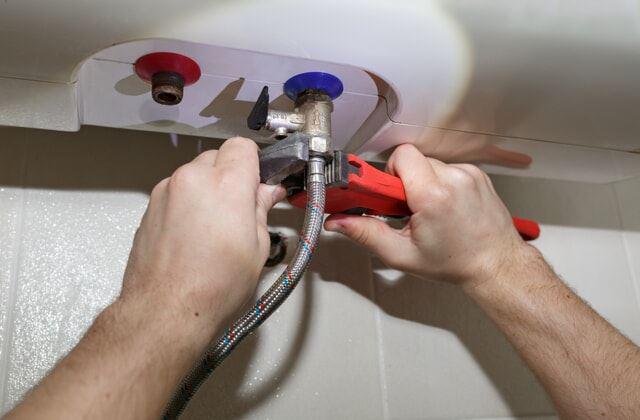How to Properly Care for Your Home's Hot Water System
How to Properly Care for Your Home's Hot Water System
Blog Article
The writer is making a number of good points related to How to Maintain a Hot Water Heater in a Few Simple Steps in general in this content in the next paragraphs.

Hot water is vital for day-to-day convenience, whether it's for a refreshing shower or washing meals. To guarantee your warm water system runs efficiently and lasts longer, routine upkeep is vital. This article provides practical tips and insights on how to maintain your home's warm water system to stay clear of disturbances and pricey fixings.
Intro
Keeping your home's warm water system may appear difficult, but with a few simple actions, you can guarantee it runs smoothly for many years to come. This guide covers everything from recognizing your hot water system to DIY maintenance ideas and understanding when to call in professional help.
Importance of Maintaining Your Hot Water System
Regular maintenance not only extends the lifespan of your hot water system but also ensures it runs successfully. Overlooking maintenance can bring about lowered performance, greater power expenses, and even premature failure of the system.
Signs Your Hot Water System Demands Upkeep
Recognizing when your warm water system needs interest can avoid major issues. Keep an eye out for indicators such as irregular water temperature, unusual noises from the heater, or corroded water.
Purging the Hot Water Heater
Purging your hot water heater eliminates sediment buildup, boosting performance and extending its life.
Checking and Replacing Anode Rods
Anode poles stop rust inside the storage tank. Inspecting and changing them when worn is important.
Facility Concerns Needing Professional Aid
Instances include major leakages, electrical problems, or if your hot water heater is constantly underperforming.
Routine Specialist Upkeep Advantages
Professional upkeep can include thorough examinations, tune-ups, and guaranteeing conformity with security standards.
Evaluating and Changing Temperature Setups
Adjusting the temperature level settings ensures ideal performance and safety and security.
DIY Tips for Upkeep
You can do several upkeep jobs on your own to maintain your warm water system in top problem.
Checking for Leakages
On a regular basis inspect pipelines and connections for leakages, as these can bring about water damages and greater bills.
Comprehending Your Hot Water System
Prior to diving right into maintenance jobs, it's valuable to recognize the fundamental parts of your hot water system. Typically, this includes the hot water heater itself, pipes, anode poles, and temperature controls.
Month-to-month Upkeep Tasks
Regular month-to-month checks can help catch small issues prior to they escalate.
Checking Stress Alleviation Valves
Evaluating the stress relief valve ensures it operates correctly and stops excessive pressure build-up.
Insulating Pipes
Shielding hot water pipes minimizes heat loss and can save power.
When to Call a Specialist
While DIY upkeep is valuable, some issues need specialist proficiency.
Conclusion
Routine upkeep of your home's hot water system is important for effectiveness, long life, and expense financial savings. By following these suggestions and understanding when to look for professional help, you can make sure a trusted supply of warm water without unanticipated disruptions.
Water Heater Maintenance: The Basics
Maintaining your water heater will ensure it operates efficiently and has a longer lifespan. Neglecting regular maintenance can lead to costly repairs and an even bigger chunk of your savings if you have to replace it sooner than necessary. But there’s good news: Most water heater maintenance tasks are relatively simple and easy for homeowners with basic DIY skills.
Flush the Water Heater
Over time, sediment and minerals can build up in the tank, reducing its efficiency and potentially causing damage. To flush the tank, turn off the power or gas supply, attach a hose to the drain valve near the bottom and open the valve to drain the water until it runs clear. Ideally, flush the tank annually.
Replace the Anode Rod
The anode rod is a sacrificial metal rod that helps prevent corrosion inside the tank. Inspect and replace it every three to five years or per the manufacturer's recommendation. To replace the anode rod, turn off the power or gas supply, drain a few gallons of water from the tank, unscrew the old rod and replace it with a new one. If the anode rod is significantly corroded or covered in calcium buildup, it's a sign the water heater may need to be replaced soon.
Tune-Up
A yearly tune-up can help identify potential issues and ensure your water heater operates at peak efficiency. This typically involves checking the thermostat, burner assembly (for gas heaters) and any other components specified by the manufacturer. During a tune-up, the technician may also clean the burner and adjust the pilot light (for gas heaters) or examine the heating elements (for electric heaters).
How to Maintain Your Water Heater
Insulate the tank. Insulating the tank can improve energy efficiency and reduce heat loss, saving you money on energy bills. You can purchase precut insulation blankets designed specifically for water heaters or use standard fiberglass insulation wrapped securely around the tank. Check the temperature. The recommended water temperature for most households is around 120 degrees Fahrenheit (49 degrees Celsius). Higher temperatures can increase energy costs and potentially cause scalding. Use a kitchen thermometer to check the temperature at the faucet nearest the water heater. Monitor water pressure. Excessive water pressure can strain the water heater and cause leaks or even tank failure. Install a pressure-reducing valve if necessary. The ideal water pressure range is between 60 and 70 PSI (pounds per square inch). Test the temperature and pressure (T&P) relief valve. The T&P relief valve is a safety feature that releases pressure if the tank gets too hot or the pressure builds up too high. Test it annually by lifting the lever and allowing a small amount of water to release. Replace the valve if it doesn't release water or reseal properly. Check for leaks. Regularly inspect the tank, pipes and fittings for leaks or corrosion. Deal with issues promptly to prevent further damage. Even a small leak can lead to significant water damage over time. Consider a tankless water heater. If your traditional tank-style water heater is nearing the end of its lifespan ( typically 10 years), consider replacing it with a tankless water heater. These units heat water on demand, reducing standby energy losses and potentially saving you money on your energy bills. Schedule professional maintenance. While homeowners can perform many water heater maintenance tasks, it's still a good idea to schedule professional maintenance every few years. A plumber or HVAC technician can thoroughly inspect the unit, identify potential issues and ensure it operates safely and efficiently. https://www.homeserve.com/en-us/blog/home-improvement/hot-water-heater-maintanence/

I'm certainly very fascinated by Tips on Maintaining a Water Heater and I really hope you enjoyed the blog posting. Are you aware of another individual who is occupied with the niche? Why not share it. We cherish your readership.
Visit My Site Report this page